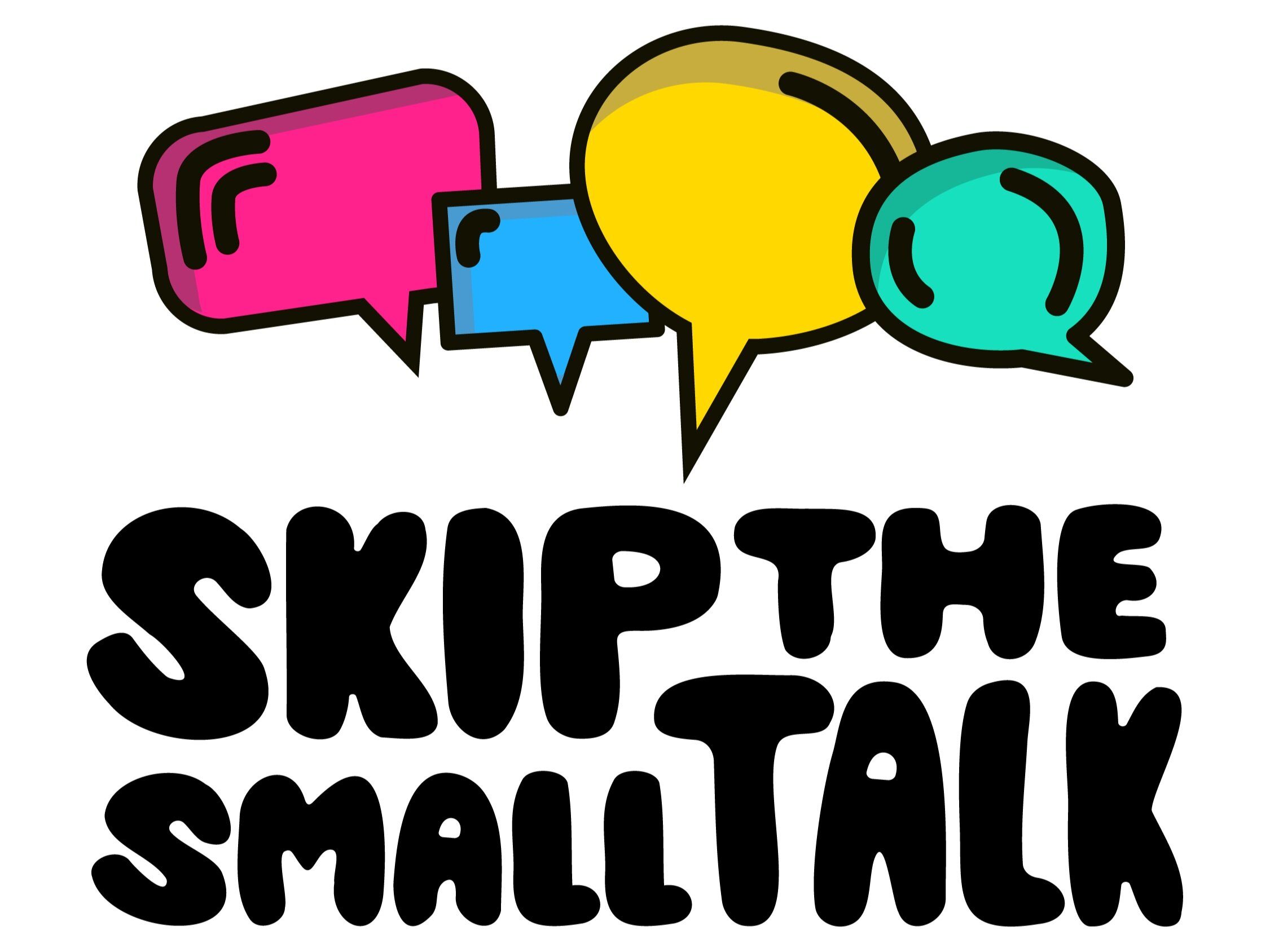How to get the most out of Zoom calls
For a lot of us, it seems that Zoom calls are here to stay. So here are some tips for structuring your online video calls, both work-related and social, to get the most out of them without getting totally drained.
Limit the duration. This is why our Skip the Small Talks on Zoom are only 1.5 hours long even though our in-person events are longer. We’ve found after extensive trials of different kinds of events that folks seem to be the most present for the first 30-45 minutes, and they zone out after about 1.5 hours.
If you must make a Zoom gathering longer than 1-1.5 hours for any reason, emphasize that people can come and go as they please. Trust us— you really don’t want people hanging around while they’re totally sick of Zoom and secretly opening up other tabs on their computer.
And if you are in the unfortunate situation of being on the receiving end of a long Zoom hangout, try to keep track of how you’re feeling and if possible, leave once you notice your attention faltering (or at very least take a break). Trying to keep up with an online conversation when you’re drained is often a losing battle, so it’s usually best to avoid it if possible.Create as much structure as possible. If you’re one-on-one, it can be fine to chat with a little less structure. But if you’re in a group, you’ll definitely want to have a general structure in mind, at very least to start out. (Yes, this is also why our Zoom events are more structured than our in-person events.)
The rationale for having some structure is that it is difficult to pick up on signals like who’s hoping to talk when, with factors like lag and fewer body language cues at play. So having some structure can reduce the mental energy needed for Zoom meetings by quite a bit.
Structure can be anything from playing a game, to going around with each person mentioning something that happened in their week, to having an agenda of what needs to be discussed and who’s going to be leading each part of the discussion. Whatever kind of structure you decide on, having some sort of shape to the meeting is a great way to help people feel a lot more comfortable and to reduce Zoom fatigue significantly.Emote a little more. We wouldn’t necessarily recommend faking it, but any time you’re feeling a certain way and you want others to catch on, it can help to show it either verbally or visually or a combination. People tend to emote less online, and that leads the people they’re interacting with to emote less, too. So if you can be the first to emote a little more, which can look like just earnestly talking about your excitement to be there, or your gratitude for folks’ help on a project, others are likely to follow suit. And that can make things feel a little more connecting, and it can help others feel more at ease.
Don’t take lack of enthusiasm personally. This goes hand-in-hand with the fact that people emote less. So don’t be surprised if you see a Zoom room full of stony, stationary faces. That doesn’t mean people aren’t engaged! It’s just that with fewer social cues than we have access to in person, we tend to subconsciously mirror that by giving out fewer social cues, ourselves. It’s contagious, and you’re likely to usually end up in Zoom rooms with more muted facial expressions than you might be used to. So, don’t expect a room full of bright eyes, bushy tails, and smiles, even if people are having a great time.
Check in with yourself regularly. Zoom calls can take so much of your attention that it can be easy to forget that you’re hungry, thirsty, tired, uncomfortable, etc. while you’re chatting with others online. So you’ll want to be extra careful to check in with yourself to make sure you’re not ignoring your physical and emotional needs. Because otherwise, you can find yourself feeling grumpy or spacing out without knowing why, when in reality, you could get back to your normal self with just a glass of water or quick stretch.
If you’re in a setting where it’s appropriate, you can also gently encourage other folks in your Zoom gathering to take brief breaks to grab water, stretch, allow their eyes to rest by looking at something that isn’t a computer screen, or anything else your guests may need. We’ve noticed especially at our private/ corporate/college online events that this is one a lot of people forget, so don’t be surprised if you see a lot of people take the opportunity to take quick break when you offer it up.
If we’re being honest, Zoom gatherings just aren’t the same as in-person gatherings. But they are much more accessible for a lot of folks (and right now, they’re safer for our immunocompromised friends and many others) so it’s a good idea to practice, practice, practice the above tips to get the most out of your online meetings and hangouts. And as always, have self-compassion with yourself as you get used to it; it’s a process.

